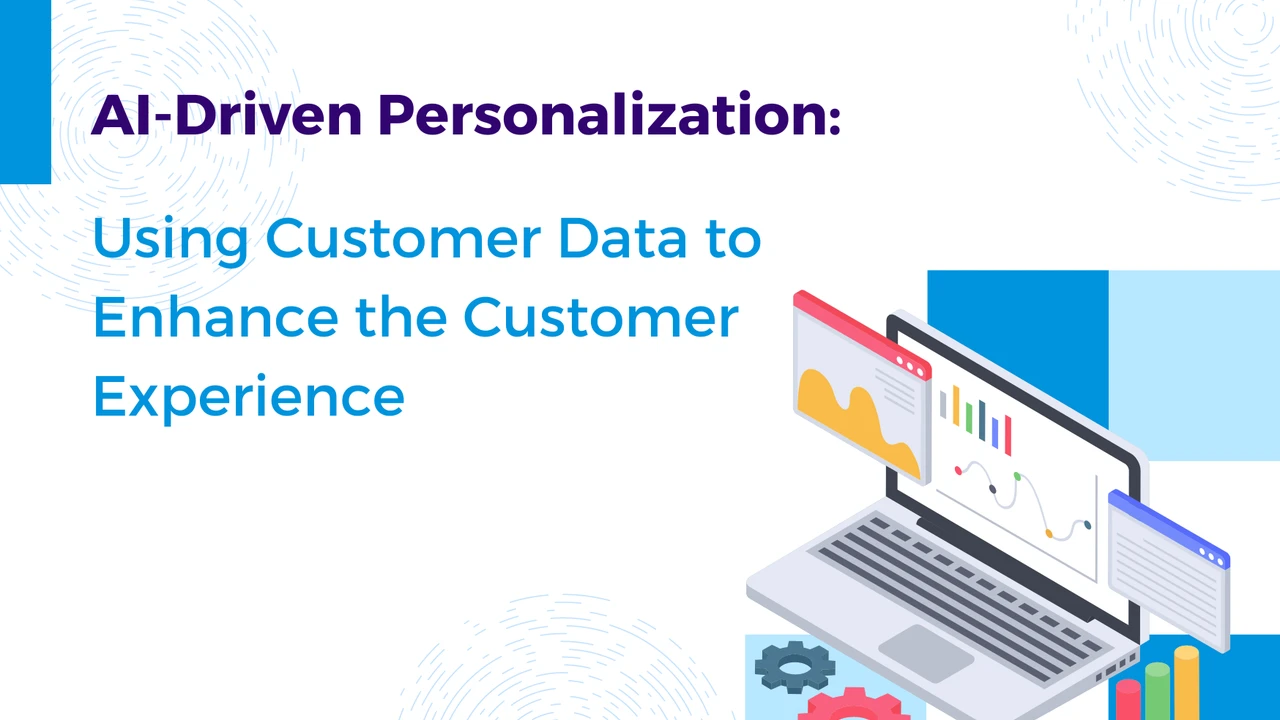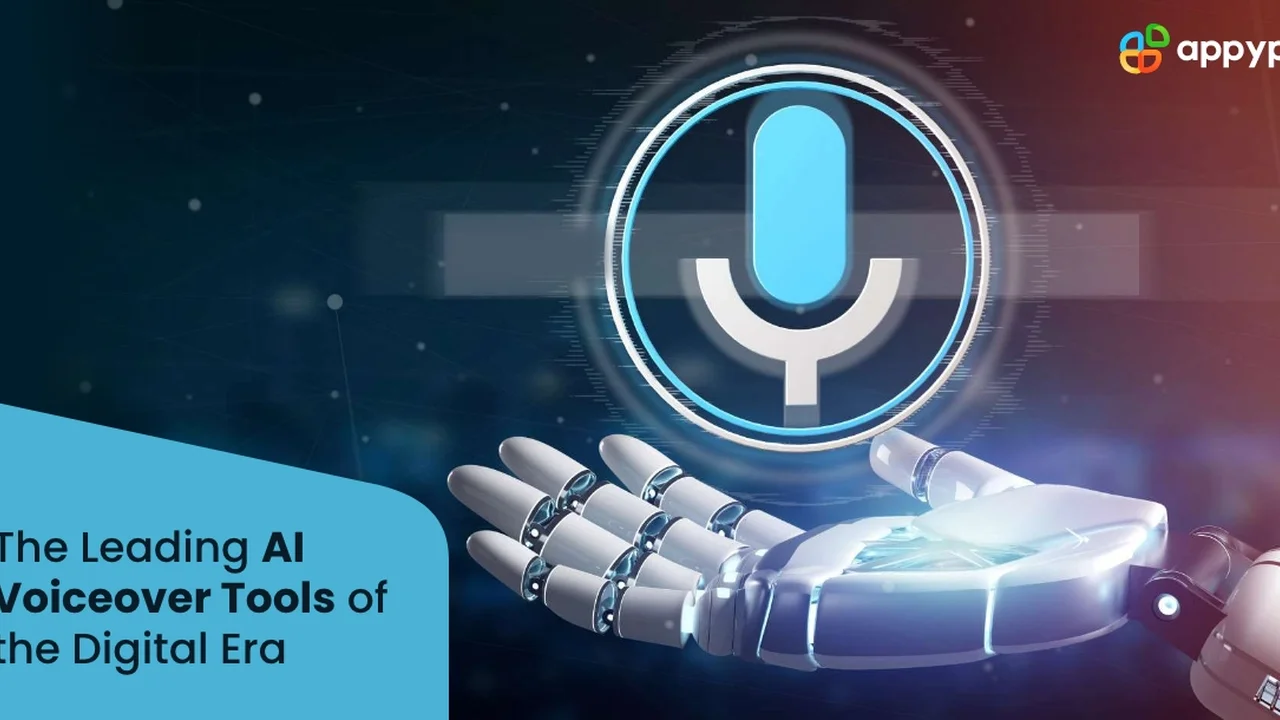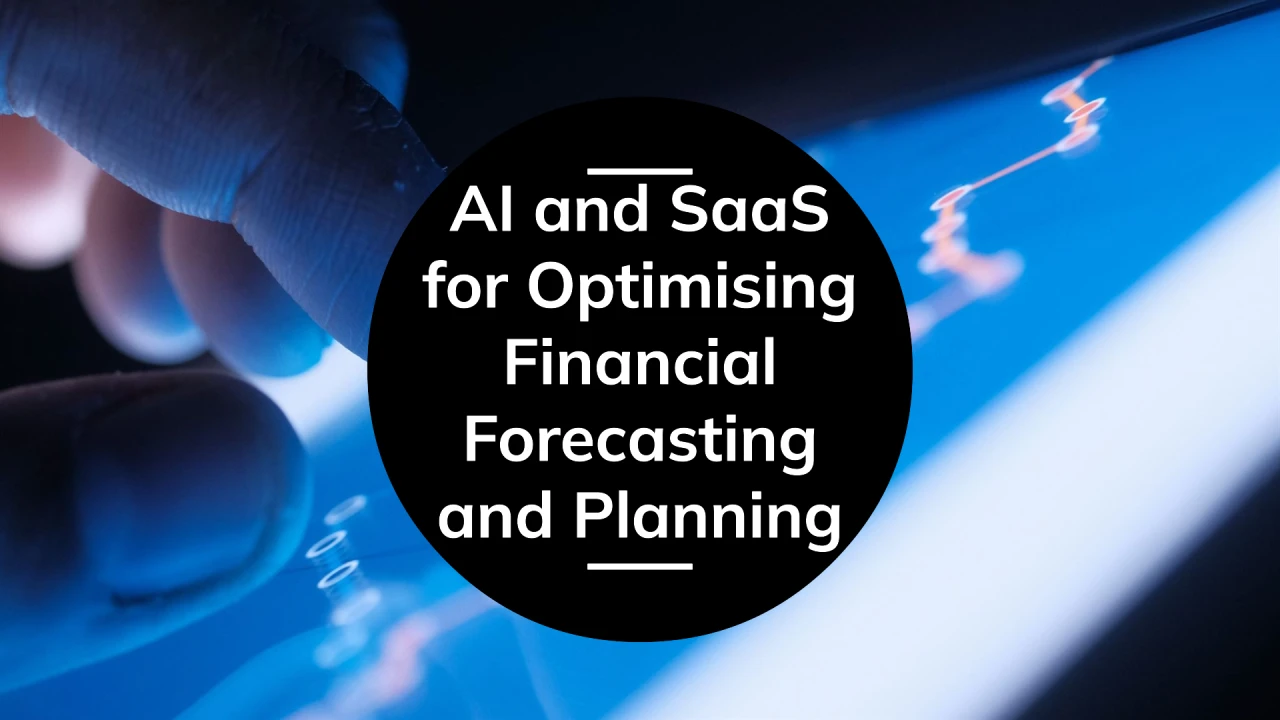AI for Content Personalization and Delivery
Deliver highly relevant content to your audience through AI-powered personalization engines.

Deliver highly relevant content to your audience through AI-powered personalization engines.
AI for Content Personalization and Delivery
Hey there, ever feel like the internet just *gets* you? Like, you open up Netflix and it knows exactly what show you want to binge next, or you're scrolling through an online store and it pops up with that exact gadget you were just thinking about? That's not magic, my friend, that's AI-powered content personalization and delivery at work. It's all about making sure the right content reaches the right person at the right time. And for businesses, especially those looking to grow, this isn't just a nice-to-have anymore; it's a must-have.
Think about it: in today's super-saturated digital world, getting your message heard is tough. People are bombarded with information. If your content isn't immediately relevant and engaging, they're gone in a flash. That's where AI steps in, acting like your super-smart digital assistant, figuring out what each individual wants and serving it up on a silver platter. It's about moving beyond generic, one-size-fits-all content and embracing a truly tailored experience. Let's dive into how AI makes this happen, what tools are out there, and why it's a game-changer for your audience engagement and business growth.
Understanding AI Powered Content Personalization What It Is and Why It Matters
So, what exactly are we talking about when we say 'AI-powered content personalization'? At its core, it's using artificial intelligence and machine learning algorithms to analyze user data – things like their browsing history, past purchases, demographics, location, and even real-time behavior – to predict what content they'll find most interesting or useful. Then, it dynamically adjusts the content they see, whether it's on a website, in an email, on a social media feed, or even in an app.
Why does this matter so much? Well, for starters, it dramatically improves the user experience. When content feels like it was made just for you, you're more likely to engage with it. This leads to higher click-through rates, longer time spent on pages, and ultimately, better conversion rates. For businesses, this means more sales, more loyal customers, and a stronger brand presence. It's about building a deeper connection with your audience, making them feel valued and understood. Plus, it helps cut through the noise. Instead of shouting into the void, you're having a personalized conversation with each potential customer.
Key AI Technologies Driving Content Personalization Machine Learning and Data Analytics
The magic behind AI personalization largely comes down to two big players: machine learning and data analytics. Data analytics is the process of examining raw data to find trends and draw conclusions. This is where you gather all that juicy information about your users. Machine learning, on the other hand, is a subset of AI that allows systems to learn from data without being explicitly programmed. It's like teaching a computer to recognize patterns and make predictions based on what it's seen before.
Here's a simplified breakdown of how they work together:
- Data Collection: AI systems collect vast amounts of data from various touchpoints – website visits, app usage, email interactions, social media engagement, purchase history, and more.
- Data Analysis: Machine learning algorithms then process this data. They identify patterns, segment users into groups with similar behaviors or preferences, and build individual user profiles.
- Prediction and Recommendation: Based on these patterns and profiles, the AI predicts what content a user is most likely to respond to. This could be a product recommendation, an article suggestion, a specific ad, or even a personalized email subject line.
- Dynamic Delivery: The content is then delivered in real-time, adapting to the user's current context and behavior. This means if someone is browsing shoes, they might see ads for shoes, but if they then click on a specific brand, the AI might start showing them more from that brand.
- Continuous Learning: The system doesn't just stop there. It continuously learns from new interactions, refining its predictions and improving its personalization over time. It's a constant feedback loop.
Think of collaborative filtering (like 'customers who bought this also bought...') or content-based filtering (recommending items similar to what you've liked before) – these are classic examples of machine learning in action for personalization.
Top AI Powered Personalization Engines and Platforms for Businesses
Alright, let's get to the tools! There are a ton of platforms out there that leverage AI for content personalization, catering to different business sizes and needs. Here are a few prominent ones, along with their typical use cases and pricing models:
Optimizely (formerly Episerver)
- Use Case: Optimizely is a comprehensive digital experience platform (DXP) that offers robust AI-powered personalization for websites, e-commerce stores, and content management. It's great for businesses looking for a unified platform to manage content, optimize experiences, and personalize customer journeys across multiple channels. They use AI to analyze visitor behavior and deliver relevant content, product recommendations, and promotions in real-time.
- Key Features: AI-powered content recommendations, A/B testing and experimentation, audience segmentation, real-time personalization, e-commerce capabilities, content management system (CMS).
- Pricing: Optimizely's pricing is typically enterprise-level and not publicly listed. It's usually based on usage, features, and the scale of your business. Expect custom quotes, often in the tens of thousands to hundreds of thousands of dollars annually, depending on your needs.
- Target Audience: Mid-to-large enterprises, e-commerce businesses, and organizations with complex digital marketing needs.
Dynamic Yield (now part of Mastercard)
- Use Case: Dynamic Yield is a leading personalization platform that focuses on delivering individualized experiences across web, mobile apps, and email. It's particularly strong for e-commerce and media companies looking to optimize conversion rates and engagement through personalized recommendations, messaging, and A/B testing.
- Key Features: AI-powered recommendations (product, content, offers), audience segmentation, A/B testing and multivariate testing, real-time messaging, personalized notifications, email personalization.
- Pricing: Similar to Optimizely, Dynamic Yield's pricing is enterprise-grade and custom. It's generally based on traffic volume (monthly unique visitors) and the specific features required. Expect significant annual costs, often starting from several thousand dollars per month for smaller enterprises and scaling up considerably.
- Target Audience: E-commerce businesses, media publishers, and large enterprises focused on optimizing customer journeys and conversions.
Braze
- Use Case: Braze is a customer engagement platform that excels at personalized messaging across various channels like email, push notifications, in-app messages, and SMS. While not a pure 'content personalization' platform in the sense of website content, its AI capabilities are crucial for delivering personalized *messages* that drive engagement and conversions. It uses AI to optimize send times, predict user churn, and recommend personalized content within messages.
- Key Features: Multi-channel messaging, AI-powered journey orchestration, predictive analytics, audience segmentation, A/B testing for messages, in-app messaging, push notifications.
- Pricing: Braze's pricing is also custom and depends on the number of monthly active users (MAU) and the features you need. It's generally considered an enterprise solution, with costs ranging from thousands to tens of thousands of dollars per month.
- Target Audience: Mobile-first businesses, app developers, and companies focused on robust customer engagement and retention through personalized communication.
Salesforce Marketing Cloud Personalization (formerly Evergage)
- Use Case: Integrated within the broader Salesforce ecosystem, this platform provides real-time personalization across websites, mobile apps, and email. It's ideal for businesses already using Salesforce CRM and looking to leverage their customer data for highly personalized experiences and marketing campaigns.
- Key Features: Real-time personalization, AI-powered recommendations, audience segmentation, A/B testing, integration with Salesforce CRM, cross-channel personalization.
- Pricing: As part of Salesforce, pricing is typically bundled or quoted based on the specific Marketing Cloud editions and add-ons. It's an enterprise solution, with costs varying widely based on scale and features, often in the tens of thousands of dollars annually.
- Target Audience: Businesses already invested in the Salesforce ecosystem, large enterprises, and those seeking deep integration between CRM and personalization.
Smaller Scale and Niche Tools
For smaller businesses or those just starting with personalization, there are more accessible options:
- WordPress Plugins (e.g., If-So Dynamic Content, Logic Hop): These plugins allow you to display dynamic content based on user conditions (location, referral source, past visits, etc.). They offer a simpler form of personalization, often rule-based rather than pure AI, but can be very effective for basic needs.
- Pricing: Typically one-time purchase or annual subscriptions ranging from $50 to $300 per year.
- E-commerce Platforms with Built-in Personalization (e.g., Shopify with apps, BigCommerce): Many modern e-commerce platforms offer built-in recommendation engines or have app marketplaces with personalization tools. Shopify apps like 'Personalized Recommendations' or 'ReConvert Upsell & Cross Sell' use AI-like algorithms to suggest products.
- Pricing: Varies widely, from free basic features to monthly app subscriptions ranging from $10 to $100+.
- Email Marketing Platforms (e.g., Mailchimp, ActiveCampaign, HubSpot): While primarily email tools, many now incorporate AI for segmenting audiences, optimizing send times, and even suggesting personalized content blocks within emails.
- Pricing: Tiered pricing based on subscriber count, starting from free plans for small lists up to hundreds or thousands of dollars per month for large enterprises.
Implementing AI Personalization Best Practices and Use Cases
So, you've got the tools, but how do you actually make this work for your business? It's not just about flipping a switch. Here are some best practices and common use cases:
Best Practices for Effective AI Personalization
- Start with Clear Goals: What do you want to achieve? Higher conversion rates? Increased engagement? Reduced churn? Your goals will dictate your strategy.
- Collect and Understand Your Data: Garbage in, garbage out. Ensure you're collecting relevant, clean data. Understand your audience segments and their behaviors.
- Test, Test, Test: Personalization isn't a one-and-done. Use A/B testing and multivariate testing to continuously optimize your personalized experiences. What works for one segment might not work for another.
- Balance Personalization with Privacy: Be transparent about data collection and respect user privacy. Don't be creepy.
- Iterate and Refine: AI models learn over time. Continuously monitor performance, analyze results, and refine your personalization strategies.
- Don't Over-Personalize: Sometimes too much personalization can feel intrusive. Find the right balance.
- Integrate Across Channels: For the best results, ensure your personalization efforts are consistent across your website, email, mobile app, and other touchpoints.
Common Use Cases for AI Content Personalization
- E-commerce Product Recommendations: This is probably the most common. 'Customers who viewed this also viewed...' or 'Recommended for you' sections on product pages, homepages, and in emails.
- Content Website Article Suggestions: For blogs and news sites, AI can recommend articles based on a user's reading history, topics of interest, or even articles popular with similar readers.
- Personalized Email Campaigns: Tailoring email content, subject lines, and offers based on a subscriber's past interactions, purchase history, or browsing behavior.
- Dynamic Website Content: Showing different hero images, calls-to-action, or even entire page layouts based on whether a user is new, returning, or part of a specific segment.
- Personalized Ads and Offers: Delivering highly targeted ads on social media or display networks based on user profiles and predicted interests.
- In-App Personalization: Customizing the app experience, such as showing relevant features, notifications, or content based on user behavior within the app.
- Search Results Optimization: Personalizing search results on your website to show more relevant products or content based on a user's past searches or preferences.
Challenges and Considerations in AI Content Personalization
While AI personalization is powerful, it's not without its challenges. It's important to be aware of these as you embark on your personalization journey:
- Data Quality and Quantity: AI models thrive on data. If your data is incomplete, inaccurate, or insufficient, your personalization efforts will suffer.
- Privacy Concerns: With increasing data privacy regulations (like GDPR and CCPA), businesses must be transparent about data collection and ensure compliance. Misuse of data can lead to significant reputational and legal repercussions.
- Algorithmic Bias: If the data used to train the AI contains biases, the personalization recommendations can inadvertently perpetuate those biases, leading to unfair or irrelevant experiences for certain user groups.
- Over-Personalization and Filter Bubbles: While personalization is good, too much can lead to a 'filter bubble' where users are only exposed to content that reinforces their existing views, potentially limiting discovery and new experiences. It can also feel intrusive if not handled carefully.
- Integration Complexity: Integrating personalization engines with existing CMS, CRM, e-commerce platforms, and other marketing tools can be complex and require significant technical expertise.
- Measuring ROI: While the benefits are clear, accurately measuring the return on investment (ROI) of personalization efforts can sometimes be challenging, requiring robust analytics and attribution models.
- Maintenance and Optimization: Personalization isn't a set-it-and-forget-it solution. It requires continuous monitoring, testing, and optimization to remain effective as user behaviors and market trends evolve.
Navigating these challenges requires a strategic approach, a commitment to ethical AI practices, and a willingness to continuously learn and adapt.
The Future of Content Personalization Hyper-Personalization and Beyond
What's next for AI in content personalization? We're moving towards 'hyper-personalization,' which takes individualization to an even finer grain. This involves real-time, context-aware personalization that considers not just who the user is, but also their current mood, device, location, time of day, and even external factors like weather. Imagine a travel site recommending a specific type of vacation based on your recent search history, the current weather in your city, and a flight deal that just popped up for a destination you've shown interest in.
We'll also see more integration with generative AI. This means AI won't just be recommending existing content; it will be *creating* personalized content on the fly. Think personalized ad copy, unique product descriptions, or even entire articles tailored to an individual's specific interests and reading style. This could revolutionize how content is produced and consumed, making every digital interaction truly unique.
The rise of voice interfaces and virtual assistants will also play a huge role. Imagine asking your smart speaker for news, and it delivers a personalized digest of stories it knows you'll care about, presented in a tone you prefer. The possibilities are truly endless.
Ultimately, AI-powered content personalization is about creating more meaningful and effective digital experiences. For businesses, it's about building stronger relationships with customers, driving engagement, and achieving sustainable growth in an increasingly competitive landscape. It's a journey, not a destination, and the businesses that embrace this evolution will be the ones that truly stand out.
:max_bytes(150000):strip_icc()/277019-baked-pork-chops-with-cream-of-mushroom-soup-DDMFS-beauty-4x3-BG-7505-5762b731cf30447d9cbbbbbf387beafa.jpg)






